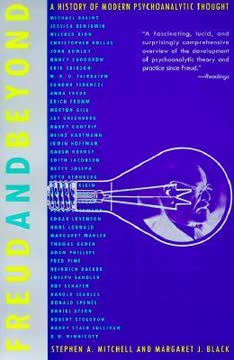Key Takeaways
1. Psychoanalysis: A Dynamic Evolution Beyond Freud's Monolith
The living impact of the revolution Freud provoked has expanded, changed, and flowered into concepts, methods, and understandings that would have scarcely been imaginable to Freud and his contemporaries.
Beyond the Couch. Psychoanalysis is often stereotyped as a patient on a couch speaking to a silent, bearded man, but this image is outdated. It's a deeply personal, emotional process that has evolved significantly since Freud's time, moving beyond a singular genius to multiple schools of thought.
Dispelling Myths. Common misconceptions include that psychoanalysis is solely Freud's work, remains unchanged, is out of fashion, or is an esoteric cult. In reality, it has diversified into various theoretical traditions and clinical practices, continually adapting to new insights and societal changes.
Cultural Pervasiveness. Far from being irrelevant, psychoanalytic concepts are deeply woven into modern culture, influencing our understanding of ourselves, from unconscious motivation to the formative power of early experiences. Its ideas have permeated fields like literature, artificial intelligence, and social sciences, demonstrating its enduring and expanding influence.
2. Freud's Core: Unconscious Conflict and Instinctual Drives
What we describe as a person’s “character” is built up to a considerable extent from the material of sexual excitations and is composed of instincts that have been fixed since childhood, of constructions achieved by means of sublimation, and of other constructions, employed for effectively holding in check perverse impulses which have been recognized as being unuti-lizable.
Archaeology of the Mind. Freud pioneered the idea of the unconscious, viewing the mind as an intricate system where hidden thoughts, feelings, and memories profoundly influence conscious experience. He shifted focus from brain to mind, demonstrating that psychological ideas, not just physical damage, could cause and cure symptoms like hysteria.
The Topographic and Structural Models. Freud developed models to map the mind: the topographic (conscious, preconscious, unconscious) and later the structural (Id, Ego, Superego). The Id represents raw impulses, the Ego regulates reality, and the Superego internalizes moral values, with conflict occurring within these agencies.
Dreams and Drives. Dreams were seen as disguised fulfillments of wishes, revealing latent content through processes like condensation and symbolism. Freud's theory of infantile sexuality, including psychosexual stages (oral, anal, phallic, genital) and the Oedipus complex, posited that personality is fundamentally shaped by the interplay of sexual and aggressive drives and defenses against them.
3. Ego Psychology: Adapting to Reality and Nurturing the Self
It is the task of the analyst to bring into consciousness that which is unconscious, no matter to which psychic institution it belongs.
Beyond Id's Secrets. Ego psychology, spearheaded by Anna Freud and Heinz Hartmann, expanded psychoanalysis to focus on the ego's functions, defenses, and adaptive capacities. It moved beyond merely uncovering repressed impulses to understanding how the ego mediates between internal drives, the superego, and external reality.
Innate Capacities and Environment. Hartmann introduced "conflict-free ego capacities" like language and perception, which are innate potentials that unfold in an "average expectable environment." He also proposed "neutralization," where the ego strips drives of their raw qualities to fuel adaptive functions, challenging Freud's sole reliance on sublimation.
Early Relationships and Self-Formation. Rene Spitz and Margaret Mahler highlighted the critical role of early mother-infant interactions. Spitz's "hospitalism" showed the devastating impact of emotional deprivation, while Mahler's "separation-individuation" detailed the child's emergence from symbiotic merger, laying groundwork for understanding preoedipal disturbances like borderline pathology.
4. Interpersonal Psychoanalysis: The Self Forged in Relationships
Personality … is made manifest in interpersonal situations and not otherwise.
The Social Self. Harry Stack Sullivan revolutionized psychoanalysis by asserting that the individual is inseparable from their interpersonal field. Personality isn't an internal entity but emerges and is shaped through recurrent interactions with others, making the "field," not the individual, the primary unit of study.
Anxiety as a Core Motivator. Sullivan identified anxiety as the crucial factor in shaping the self, distinct from fear. Anxiety is "picked up" from others via "empathic linkage" and acts as a "disintegrating tendency," interfering with needs for satisfaction. The "self-system" develops to minimize anxiety, often at the cost of genuine connection.
Security Operations and the Here-and-Now. People develop "security operations"—covert, rapid maneuvers to avoid anxiety—which, while effective short-term, perpetuate long-term problems. Contemporary interpersonalists, influenced by Clara Thompson and Erich Fromm, emphasize analyzing these patterns in the "here and now" of the analytic relationship, with the analyst's own experience becoming crucial data.
5. Kleinian Theory: Primitive Passions and Internal Object Worlds
If you hate a person, you hate something in him that is part of yourself. What isn’t part of ourselves doesn’t disturb us.
Infant's Terrifying World. Melanie Klein extended Freud's theories to infancy, portraying the psyche as a continually shifting, kaleidoscopic stream of primitive fantasies and terrors. She saw infants as born with powerful, polarized modes of relating: adoring love and destructive hate, both experienced with omnipotent impact.
Paranoid-Schizoid and Depressive Positions. Klein's core concepts are the "paranoid-schizoid position," characterized by persecutory anxiety and "splitting" of good and bad objects, and the "depressive position," where the infant integrates good and bad into "whole objects," leading to guilt over their own destructiveness and a need for "reparation."
Envy and Projective Identification. Envy, for Klein, is a destructive attack on the "good breast," spoiling goodness and destroying hope. "Projective identification," later expanded by Wilfred Bion, describes the fantasy of projecting parts of the self into another, which can then be experienced by the recipient, making the analyst's emotional experience a central tool for understanding the patient.
6. British Object Relations: The Primacy of Connection and the True Self
A baby can be fed without love, but lovelessness as impersonal management cannot succeed in producing a new autonomous human child.
Object-Seeking Libido. W.R.D. Fairbairn radically departed from Freud, proposing that libido is "object-seeking," not pleasure-seeking; the fundamental human motivation is connection with others as an end in itself. He argued that internal objects are compensatory substitutes for real connections, formed when early dependency needs are unmet.
Splitting and Internalized Relationships. Fairbairn described the "splitting of the ego" into parts like the "libidinal ego" (longing for connection) and the "antilibidinal ego" (hateful, despising need), reflecting internalized, often painful, relationships with unavailable parents. Analytic change involves believing in and committing to new, less constrained patterns of relatedness.
The Good-Enough Mother and False Self. D.W. Winnicott, a pediatrician, focused on the "good-enough mother" who provides a "holding environment" and facilitates the infant's "subjective omnipotence." Failure in this leads to "false self disorder," where the child adapts compliantly to the environment, suspending the "true self." "Transitional objects" bridge subjective omnipotence and objective reality, fostering creativity.
7. Psychologies of Identity and Self: Meaning, Vitality, and Empathy
One must learn to love oneself … with a wholesome and healthy love, so that one can bear to he with oneself and need not roam.
Psychosocial Development. Erik Erikson expanded Freud's psychobiological stages into a lifespan model of "psychosocial crises," such as "trust vs. mistrust" and "identity vs. role confusion." He emphasized the interpenetrability of individual and culture, where the psyche is shaped by cultural contexts and individuals seek meaning and continuity.
The Tragic Man and Healthy Narcissism. Heinz Kohut introduced Self Psychology, focusing on feelings of personal alienation and lives devoid of meaning, describing the "tragic man" rather than Freud's "guilty man." He reconceptualized narcissism not as infantile, but as a vital source of self-esteem, ambition, and creativity, essential for a cohesive and resilient self.
Selfobject Experiences and Empathy. Kohut identified "selfobject experiences" as crucial for healthy self-development: mirroring (confirming vigor), idealizing (merging with powerful others), and twinship (essential likeness). His methodology of "empathic immersion" and "vicarious introspection" became central, allowing the analyst to understand the patient's experience from within, fostering "transmuting internalization" of selfobject functions.
8. Freudian Revisionists: Reinterpreting the Legacy for Modern Thought
There is no absolutely specific and static Freudian essence. Nothing lies beyond any one writer’s rhetoric and thus beyond the realm of implicit and explicit dialogue.
Expanding Freud's Mansion. Freudian revisionists like Otto Kernberg, Roy Schafer, Hans Loewald, and Jacques Lacan sought to preserve Freud's core ideas while fundamentally altering them to fit contemporary understanding. They expanded the scope of psychoanalysis, integrating new insights from other schools and disciplines.
Hierarchical Psychopathology. Kernberg created a hierarchical model, integrating Freud's drive theory with object relations and ego psychology. He linked levels of psychopathology to developmental tasks: psychosis (failure in self-other differentiation), borderline (failure to integrate good/bad affects), and neurosis (classical impulse-defense conflicts).
Agency, Narrative, and Language. Schafer re-established the person as the "agent" of their experience, translating psychoanalytic concepts into an "action language" and emphasizing "narrative" as the organizing principle of mind. Loewald focused on the dialectical interplay between "primary process" (sensual, embodied language) and "secondary process" (abstract language), arguing for their mutual transformation. Lacan, influenced by linguistics, saw language as predating and shaping individual experience, with the "imaginary" (ego as illusion) and "symbolic" (language, father's law) orders determining subjectivity.
9. Trauma vs. Fantasy: The Enduring Debate on Psychopathology's Roots
If we had to select the controversy that has most divided psychoanalytic theorists and clinicians, the single issue that has given rise to the most impassioned, strident, and sharply contrasting beliefs, there is only one candidate, and there are no close seconds. That issue concerns the cause of psychological disorders: Is psychopathology the result of trauma, healthy development thrown off course by destructive events and actual experiences? Or is it the result of the misinterpretation of early experience due to the warping impact of early childhood fantasy?
Nature vs. Nurture in Psychoanalysis. This fundamental debate, mirroring broader philosophical discussions, centers on whether psychopathology stems from external trauma (nurture) or internal, fantasy-driven conflicts (nature). Freud initially emphasized seduction trauma but later shifted to universal infantile sexuality and fantasy as primary causes.
Redefining Trauma. Postclassical relational theories, like Winnicott's concept of "impingement" or Khan's "cumulative trauma," redefined trauma not as a single catastrophic event, but as chronic parental failure to meet the child's psychological needs. This perspective highlights environmental insufficiency as a key factor in developmental derailment.
Contemporary Synthesis. Modern psychoanalysis increasingly views nature and nurture as interactive, mutually shaping processes. Drives are seen as influenced by early interactions, and inherent temperamental traits are considered in the context of caregiving. The debate continues, particularly around issues like childhood sexual abuse, where some emphasize the actuality of abuse and others the role of fantasy and internal dynamics.
10. Conflict vs. Arrested Development: Two Models of Psychological Impasse
What is it that impedes psychological growth and healing? Why are people stuck, in their symptoms and in their relationships, with the painful experiences they encountered early in life?
Internal Warfare vs. Thwarted Growth. Two primary models explain the tenacity of psychopathology: the "conflict model" (classical Freudian) posits that neurosis results from internal battles between incompatible psychic forces and repressed impulses. The "arrested development model" (postclassical) argues that problems stem from the absence of crucial parental provisions, leading to stalled psychological growth.
Repression vs. Dissociation. In the conflict model, repression is the central defense, burying forbidden impulses. In the arrested development model, dissociation is key, creating vertical splits between unintegrated self-states. This means the unconscious is not just a buried past, but a dynamic, kaleidoscopic arrangement of self-experiences.
Interacting Dynamics. Contemporary thought often synthesizes these models, recognizing that long-term conflict can lead to a paucity of developmental experiences, and developmental arrests can be maintained by conflicts over loyalties or reparative fantasies. Healing involves addressing both the underlying conflicts and the missing developmental experiences.
11. Gender and Sexuality: A Shifting Landscape of Psychoanalytic Understanding
Anatomy, as Freud put it, was destiny, and for Freud, gender development was merely a corollary to the development of sexuality.
Beyond Anatomical Destiny. Freud's view of gender and sexuality was rooted in 19th-century biology, seeing anatomy as destiny and masculinity as the baseline. He believed girls felt castrated and longed for penis substitutes. This phallocentric view has been extensively critiqued and transformed by subsequent psychoanalytic and feminist thought.
Cultural and Relational Influences. Later theorists, including Klein, culturalists like Karen Horney and Clara Thompson, and relational theorists, emphasized that gender and sexuality are shaped by early relationships and cultural meanings, not just biological drives. They explored how societal roles, power dynamics, and the integration of love and hate influence sexual experience.
Diverse Contemporary Perspectives. Modern psychoanalysis offers varied accounts: some neo-biological models still derive gender from universal fantasies about anatomy (e.g., dread of the preoedipal mother), while developmental essentialists highlight distinct female sensibilities. Developmental constructivists, like Nancy Chodorow, argue that gender differences are artifacts of social structures, particularly child-rearing inequalities, leading to a more nuanced understanding of both gender and sexual orientation as complex psychological and social constructions.
12. The Analytic Relationship: From Neutrality to Intersubjective Engagement
The truth is that it is an interaction between two personalities, in both of which the ego is under pressure from the id, the superego, and the external world; each personality has its internal and external dependencies, anxieties, and pathological defences; each is also a child with his internal parents; and each of these whole personalities-that of the analysand and that of the analyst-responds to every event of the analytic situation.
Transference: Obstacle to Vehicle. Freud initially saw transference (patient's feelings for the analyst) as an obstacle to memory work, but later recognized it as a crucial vehicle for reliving and working through repressed childhood conflicts. The analyst's role was to interpret these displacements from the past.
Countertransference: From Intrusion to Tool. Similarly, countertransference (analyst's feelings for the patient) was initially deemed an unwanted intrusion. However, contemporary two-person models, influenced by Ferenczi, Racker, and interpersonalists, view it as a valuable tool. The analyst's emotional responses are seen as containing crucial data about the patient's dynamics and the co-created interactional field.
Interpretation vs. Relationship. The debate now extends to whether change primarily comes from interpretive insight or from the transformative potential of the analytic relationship itself. Developmentalists emphasize the analyst providing "missing parental responsiveness" (e.g., holding, mirroring), while interpersonalists highlight the curative power of the analyst's authentic, honest engagement, sometimes involving judicious "disclosure" of countertransference.
Last updated:
Review Summary
Freud and Beyond receives largely positive reviews for its accessible overview of psychoanalytic theory. Readers appreciate its comprehensive coverage of various schools of thought, from Freud to contemporary approaches. Many find it informative and well-written, praising its clear explanations and case studies. Some readers note its density and occasional difficulty, while others wish for more coverage of certain theorists. Overall, it's considered a valuable introduction to psychoanalysis, though a few find it challenging or biased.
Similar Books
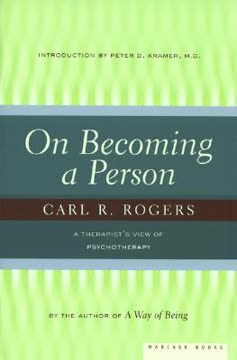
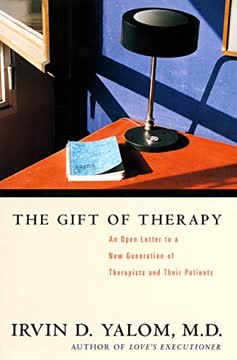
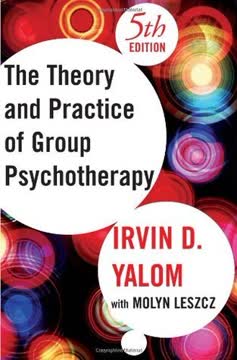
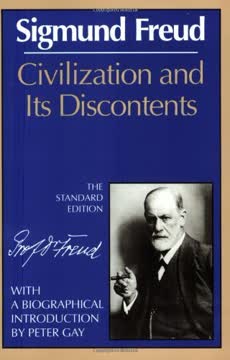
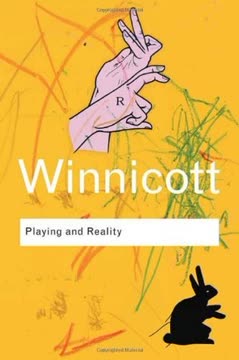
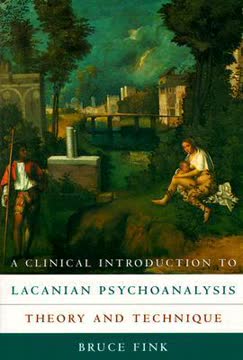
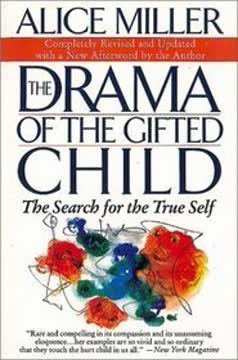
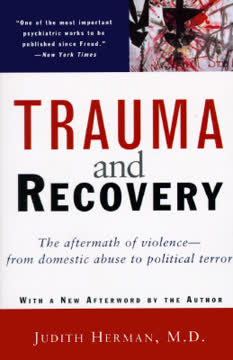
Download PDF
Download EPUB
.epub digital book format is ideal for reading ebooks on phones, tablets, and e-readers.
